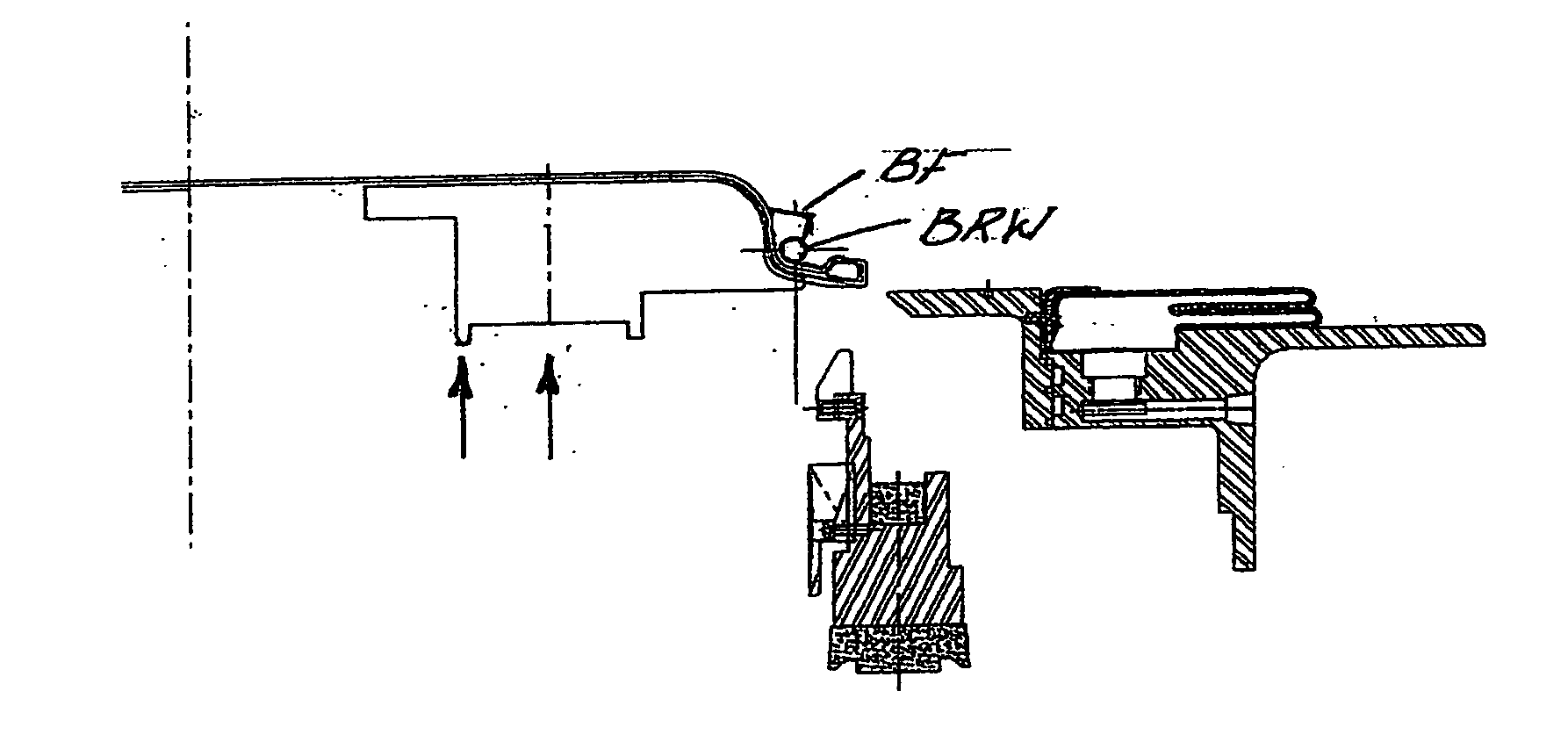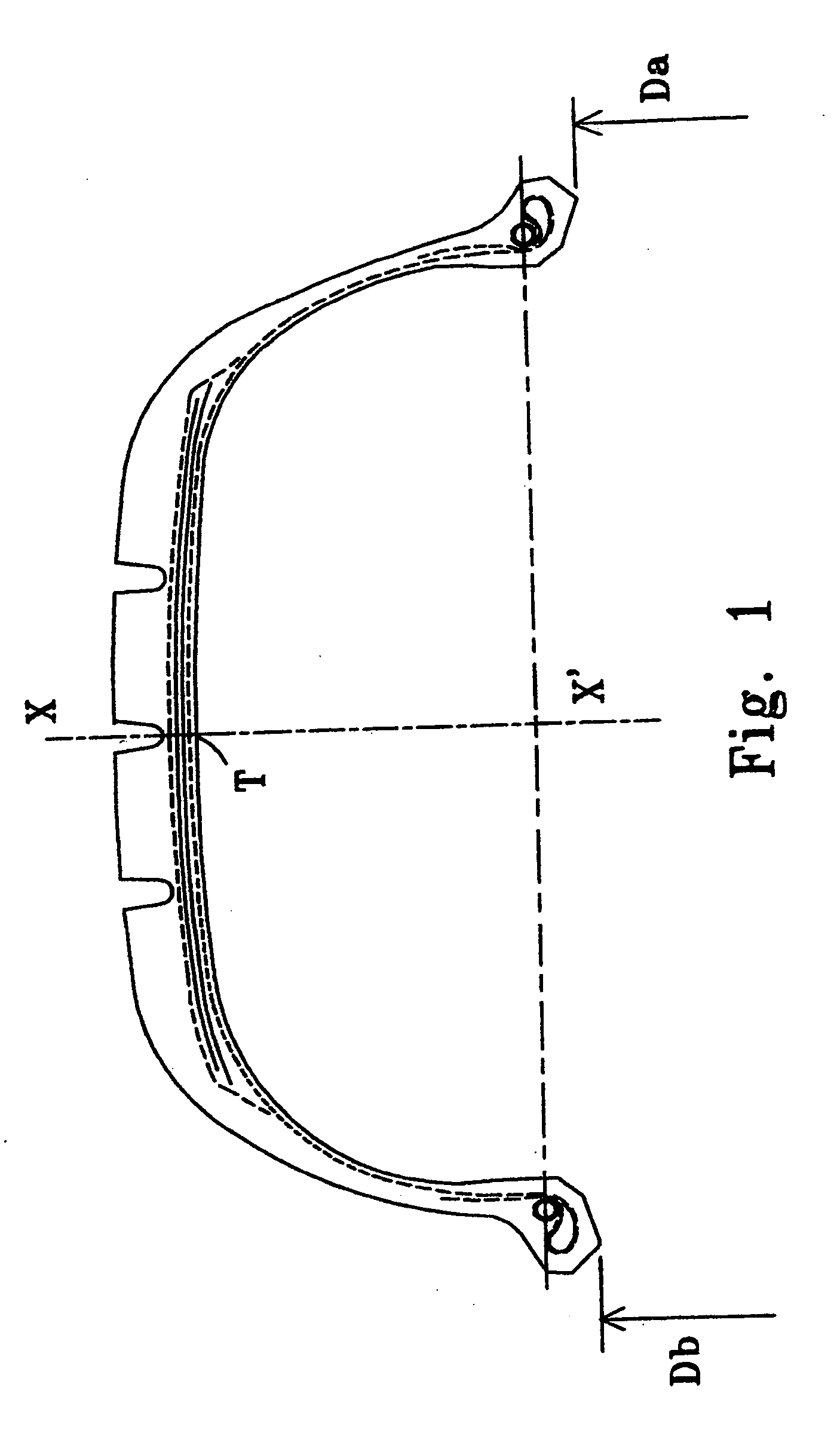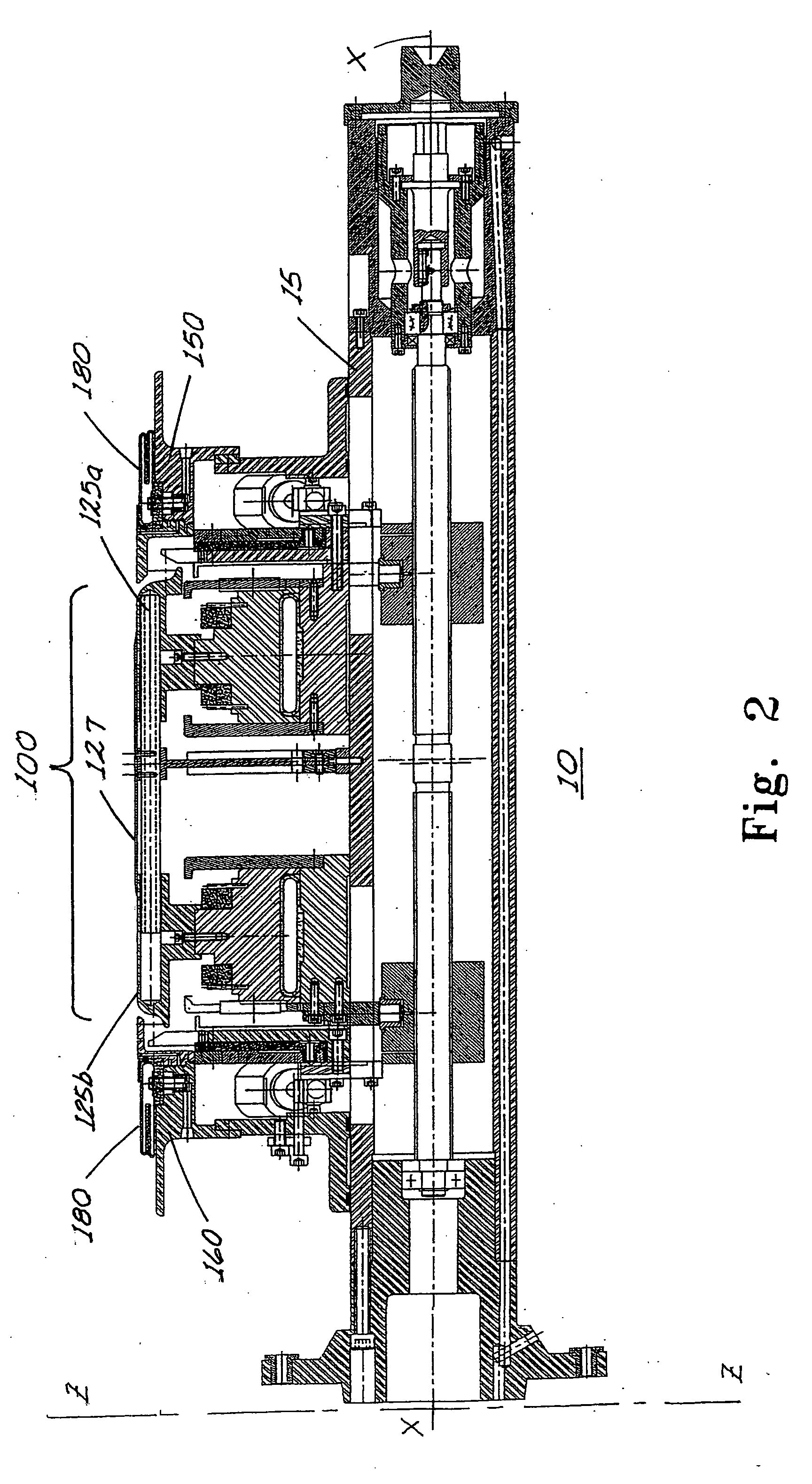Tire building apparatus and assembly process
a technology of building apparatus and tire, which is applied in the field of tire building apparatus and assembly process, can solve the problems of substantial reduction of component parts, and achieve the effects of reducing the number of components, facilitating tire fabrication, and positive placement of bead reinforcemen
- Summary
- Abstract
- Description
- Claims
- Application Information
AI Technical Summary
Benefits of technology
Problems solved by technology
Method used
Image
Examples
Embodiment Construction
[0031] Reference will now be made in detail to exemplary versions of the invention, one or more versions of which are illustrated in the drawings. Each described example is provided as an explanation of the invention, and not meant as a limitation of the invention. Throughout the description, features illustrated or described as part of one version may be usable with another version. Features that are common to all or some versions are described using similar reference numerals as further depicted in the figures.
[0032]FIG. 2 depicts an apparatus 10 for building a tire corresponding to an embodiment of the invention comprising an apparatus frame 11 and a main shaft 15, a tire building drum 100, at least a right side assembly 150 and a left side assembly 160, The tire building drum 100 is configured for building tires having unequal bead diameters such as the tire shown in FIG. 1. The main shaft 15 of the apparatus is attached to the apparatus frame 11 so that the shaft can rotate at...
PUM
| Property | Measurement | Unit |
|---|---|---|
| Angle | aaaaa | aaaaa |
| Angle | aaaaa | aaaaa |
| Angle | aaaaa | aaaaa |
Abstract
Description
Claims
Application Information
 Login to View More
Login to View More - R&D
- Intellectual Property
- Life Sciences
- Materials
- Tech Scout
- Unparalleled Data Quality
- Higher Quality Content
- 60% Fewer Hallucinations
Browse by: Latest US Patents, China's latest patents, Technical Efficacy Thesaurus, Application Domain, Technology Topic, Popular Technical Reports.
© 2025 PatSnap. All rights reserved.Legal|Privacy policy|Modern Slavery Act Transparency Statement|Sitemap|About US| Contact US: help@patsnap.com



